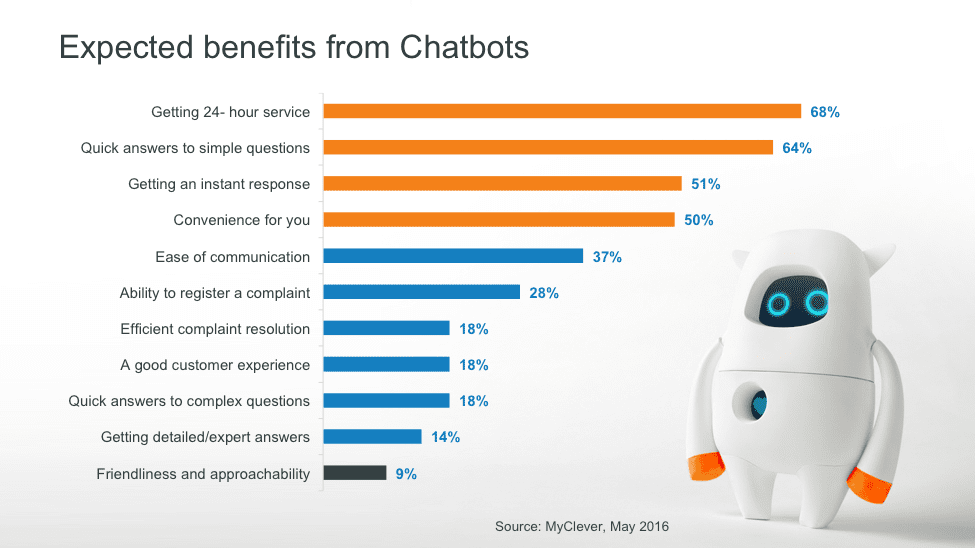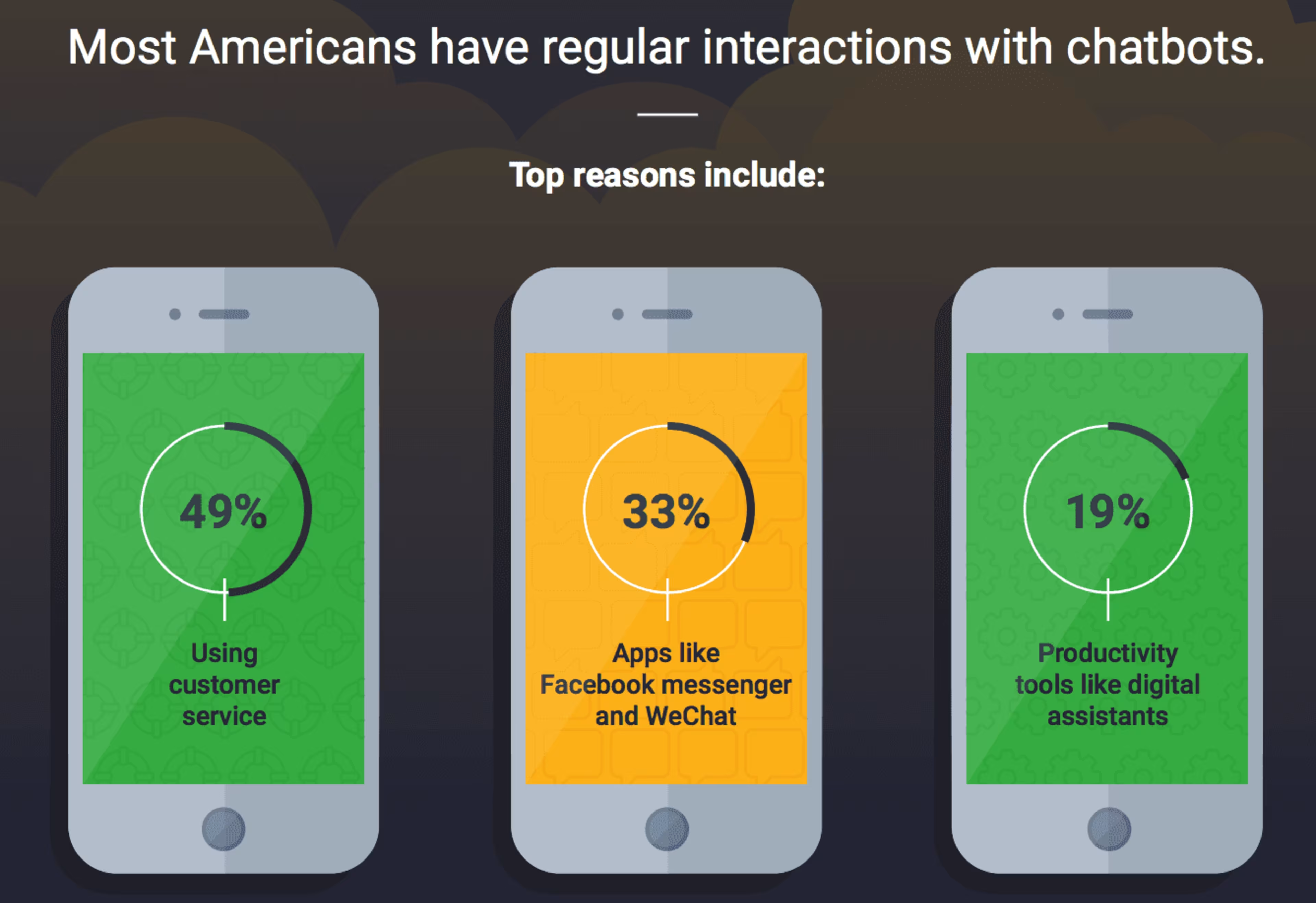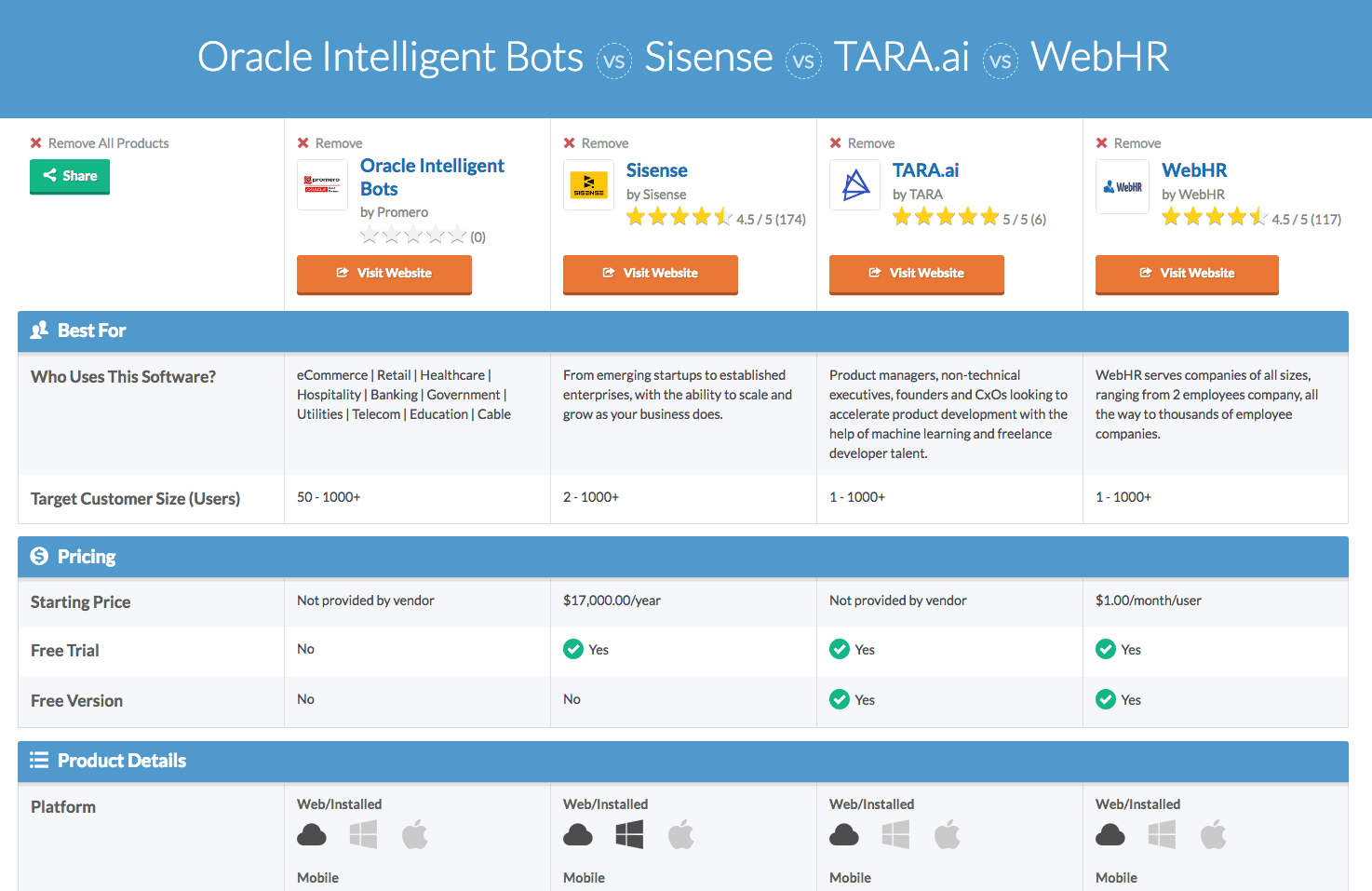As a small business, you already know that big businesses are going to win on economies of scale and incumbent advantage.
But you have your own advantages, including fewer customers and greater flexibility in how to serve them, giving you a leg up on excellent customer service.
Chatbots can be a great way to cost-effectively supplement your customer service offerings and supercharge your live chat software. Businesses inevitably encounter lots of people asking similar questions.
A bot can answer those questions, freeing up human agents for higher-value work.

Sounds great, right? But what percentage of your peers are actually using chatbots?
Today, we'll find the answer to that question, discover which industries are more likely to use chatbots, and talk about the future of chatbot adoption and how big businesses are already using chatbots.
We'll also explore whether chatbots are still only feasible for big businesses with big budgets and large customer interaction volumes.
I'll offer three reasons small and midsize businesses (SMBs) should consider rolling out chatbots for customer support, and provide tips for SMB leaders who want to experiment with chatbots to help you get the most out of your investment.
Let's get started.
Who's using chatbots?
Gartner asked 647 small and midsize business (SMB) leaders whether they are currently using customer service chatbots, planning to use them in the next two years, evaluating them, or have no plans to evaluate them.
Here's how they responded:
No plans to evaluate | 33% |
Currently using | 21% |
Plan to use in the next one to two years | 25% |
Evaluating | 21% |
Diving deeper into the data
When we broke down respondents by industry, retail had the highest “no plans to evaluate" percentage.
When we asked respondents whether their role was in IT, business, or a blend of both, we noticed a stark difference in chatbot adoption between IT and business roles.
While 62% of business respondents had no plans to evaluate chatbots for customer service, only 16% of IT pros responded that way. Among IT pros, 29% are currently using chatbots and 35% plan to use them in the next few years.
What Gartner says about chatbots
What have we learned? Most SMBs are not using chatbots today, and have no plans to do so in the near future.
Because of chatbots' potential to save time and money, Gartner predicts that by 2019, three times more businesses will use chatbots than used them in 2017 (full research available to Gartner clients).
By 2016, there were already 34,000 business chatbots on Facebook Messenger being used in a variety of ways.
Bots are giving customers flight data and telling them what's on sale at a lower cost-per-contact than human agents. American Express customers can ask the company's chatbot on Facebook Messenger to track charges, show receipts, and help them redeem their reward points.
Video: What is a chatbot and why is it important?
3 reasons SMBs should consider chatbots
These applications are great, but are chatbots just for big businesses with the budget to buy expensive software and the customer interaction volumes to justify the cost?
Let's explore.
There are (at least) three reasons for SMBs to consider rolling out chatbots for customer support.

(via source)
1. Customers want them
According to recent Propeller/Helpshift survey, 55% of all American consumers welcome chatbots for customer service.
When you filter down to U.S. millennials, that number rises to 65%.
If they know a chatbot will streamline the customer service process, 75% of U.S. consumers want to use a chatbot.

(via source)
2. They provide immediate responses
One of the most important parts of good customer service is managing your customers' expectations. And what customers expect from live chat is quite different from what they expect from email.
Help Scout CEO Nick Francis told Supportive's Emily Triplett Lentz:
All of us have been on a live chat where you sit there for two minutes, waiting for a response. You're tapping your fingers like, 'When are they gonna get back to me?' And you start getting upset and impatient. If somebody waits for three minutes, they're probably going to walk away with a bad impression of your company.
That's not true of email, where most customers are delighted to get a response within a few hours.
Unlike human customer service agents, chatbots can always answer immediately, day or night. It's easier to meet customer expectations for immediate answers when you're using machines.
3. They don't get stressed
These days, customer experience success means it's not enough for a frontline rep to be able to handle one particular challenging interaction well. They've got to excel with the next one, and the one after that.
Sudden influxes of tickets or irritated customers can easily stress out human agents. And when your agents are stressed, they don't perform as well as they can. It doesn't take many bad experiences to increase customer churn.
Chatbots, however, don't get stressed, giving customers a consistent experience no matter how many people are vying for attention.
“The chatbot consistently responds immediately and in the same polite and straightforward manner—or whatever 'voice' the company chooses to program," writes Elaina Ransford for HelpShift.
Tips for successfully rolling out chatbots at your business
Now that I've convinced you to try chatbots at your small business, here are some ways to ensure you get the most value out of your chatbot implementation.
1. Offer a chatbot where it will make the most impact
Nick Francis considers live chat a very effective sales tool, and recommends making it available on your product pages.
2. Find the best use cases for chatbots
One great use case for a chatbot is routing customers. Elaina Ransford offers the example of a customer who deleted the email containing shipment tracking information.
Let's say he contacts customer service to get the tracking number. If he opens chat, a chatbot could offer options that correspond to common issues, including:
Shipping information
Logging into your account
Payment issues
If the email deleter chooses “Shipping," the chatbot could list his most recent orders and ask if his issue concerns any of them. Once the customer selects the relevant order, the chatbot presents more information on the order, including the tracking number.
The customer has what he needs, all without requiring human agent involvement.
3. Have a back up plan
Should customers need human assistance, however, it should never be far away. “The best customer service journeys are partially automated with easily accessible escape hatches for users to contact live agents," Ransford writes.
What to do next
Doing live chat well requires a big commitment and investment, especially for small businesses. Customers expect fast, friendly, helpful answers, regardless of your incoming message volume.
Chatbots can make it easier to ensure that everyone who starts a chat gets a helpful, friendly answer fast. For small businesses, I recommend testing out chatbots as soon as you launch your live chat offering.
To do this, you'll need software.
To begin your search for a chatbot provider, check out the artificial intelligence software with chatbot functionality options in Capterra's directory, which makes it easy to compare options side-by-side.

Options comparison for chatbot software (via source)